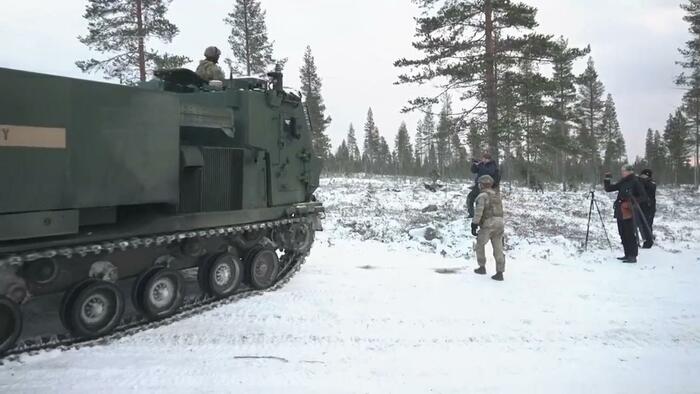The ongoing conflict in Ukraine is witnessing an alarming escalation as parties involved prepare for a potential ceasefire deal that seems increasingly distant. The Biden administration is actively seeking to bolster Ukraine’s military position before the potential transition of power to the Trump administration in early 2025. One of the most significant provocations in recent developments has been the greenlighting of long-range missile strikes on Russian territory, a move that heightens tensions and risks broader conflict. France has mirrored this escalation by allowing Ukraine to deploy French long-range Scalp missiles against Russian targets, with French Foreign Minister Jean-Noël Barrot emphasizing that this is a measure of self-defense, signifying the direct implications of the conflict for European security.
As the situation progresses, discussions surrounding the deployment of Western troops to assist Ukraine have resurfaced, particularly following indications that American support may wane under a potential Trump administration. Prominent French media has reported intensified deliberations concerning the involvement of Western military forces and private defense contractors in Ukraine, hinting at classified conversations aimed at establishing a robust response amid fears of future American disengagement from the conflict. British Prime Minister Keir Starmer’s recent visit to France has sparked renewed talks of deeper NATO involvement, with an emphasis on solidifying a core group of European allies dedicated to the ongoing struggle for Ukraine and broader European security concerns.
Military operations are rapidly expanding, as evidenced by increased reports of US-supplied ATACMS missiles being launched against Russian installations. These strategic strikes, targeting areas like the Khalino airbase, signal a marked escalation in destructive capabilities, raising alarms within the military community. The Dutch Admiral Rob Bauer, chair of NATO’s military committee, has underscored the importance of preparing for a potential “wartime scenario,” urging businesses to enhance the resilience of their supply chains against disruption amid the escalating conflicts. His statements also reflect concerns about Western dependencies on critical supplies from adversarial nations like China, emphasizing that commercial decisions could have vast strategic implications for national security.
The prospect of Western troops entering the conflict has generated a mix of urgency and apprehension. As Russia showcases its advanced hypersonic missile technology, NATO leaders are contemplating potential military responses that could change the trajectory of the war dramatically. Advocates for a more aggressive military stance fear that a shift toward a peace agreement under a Trump administration could compel Ukraine to relinquish territory in crucial regions, particularly in the east and south, where Russian advances are steadily threatening to encroach upon Ukrainian sovereignty. The combination of military escalation and shifting political landscapes indicates that the conflict may be on the brink of a dramatic tipping point.
The stakes involved in the conflict are escalating as both military and economic strategies are being reevaluated in light of the ongoing crisis. With Western nations increasingly concerned about their vulnerabilities, there is a push to bolster defenses not only against military threats but also against the broader geopolitical consequences of reliance on foreign powers for essential resources. Admiral Bauer’s comments emphasized the interconnectedness of military readiness and economic resilience, creating a narrative in which the outcomes of the conflict are intertwined with commercial supply chains and strategic decision-making. The realization that businesses must adapt to potential wartime scenarios adds a layer of complexity to the existing geopolitical concerns.
In summary, the situation in Ukraine is rapidly evolving towards a potential climax as political, military, and economic factors converge. The Biden administration’s efforts to strengthen Ukraine face pressure from looming political changes, while European leaders are grappling with how best to support Ukraine without provoking a more extensive confrontation with Russia. As discussions of troop involvement gain traction and military capabilities are enhanced, the world watches closely, aware that each decision holds the weight of global security and the future balance of power in Europe. The ramifications of these developments will undoubtedly shape international relations and conflict dynamics for years to come, creating an intricate web of alliances, strategies, and potential confrontations among the world’s military powers.

